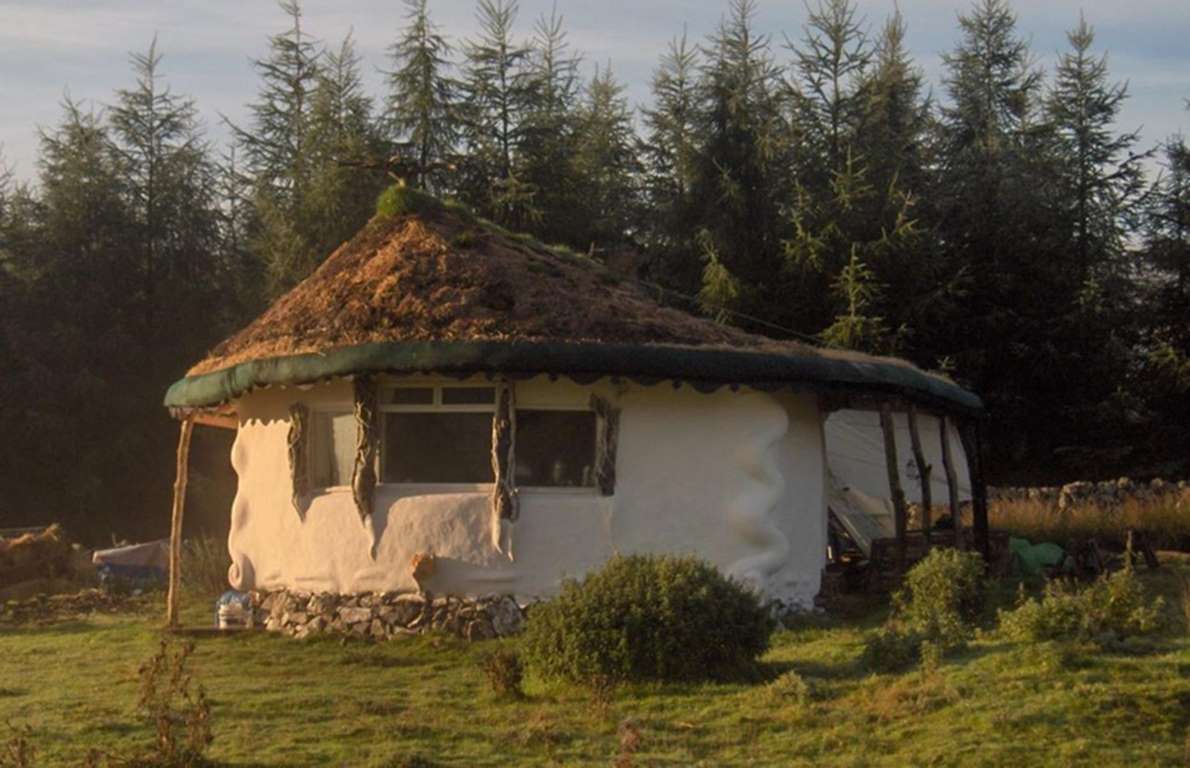
Strawbale Getaway, Colorado, USA
Most people turn to straw bale construction because of its affordability, sustainability and ease of construction. This particular straw bale house in Colorado was designed to serve as a peaceful retreat for its occupants and guests, while causing minimum impact on its surrounding environment.
As with most straw bale houses, this one was built by compressing and binding large amounts of straw to create stackable blocks that form the property’s walls. Straw was produced locally and solar panels were added during construction, resulting in a home that’s as energy efficient as it is sustainable.
Large surfaces of straw were purposefully chosen to reduce the amount of wood used for the property’s frame. As straw is a non-toxic material that doesn’t contain chemicals it also reduces indoor pollution, resulting in cleaner household air.

The Gatehouse, Dumfries, Scotland
It might look like a hobbit house from the Lord of the Rings, but this is one of the most sustainable homes in Scotland. Its owner Steve James built the eco-cottage on a budget of $5,300 (£4k), proving that straw is as cost-effective as it is environmentally friendly.
Stone rubble and a planked grid were used to create the property’s two-foot foundations and flooring frame, while 200 compressed straw bales, which James purchased for $1.30 (£1) each, were placed side by side to form its exterior and interior walls. Door and window frames were fitted as its walls began to rise.
The property is furnished with sustainable materials James salvaged from nearby forests, parks and skips. While the main living/kitchen area is organized with an open-plan layout, a small loft creates a space-saving area for sleeping.

The Jill Strawbale House, Stronthian, Scotland
However, this two-bedroom minimalist property in the Scottish Highlands couldn’t be more different in style to the previous house. It was designed to be as environmentally friendly as possible and the house exports five times more power than it uses. Electricity is produced using hydroelectric turbines and waste materials are collected ethically.
A total of 500 bales of straw were stacked up tightly to form its walls. Once erect, the walls were covered in lime, which allows moisture in while keeping the elements out. Both materials are much cheaper and accessible than conventional brick, stone and plaster.

Pale pink straw bale house, New Mexico, USA
This house in Albuquerque, New Mexico, was once was a single-story stick frame structure, but the owners complained it racked up extortionate energy costs due to poor insulation and a lack of decent ventilation. Now it’s been converted into a two-story sustainable home with the help of straw bale bricks and stucco.
In order to add a second story, a concrete footing was poured around the original house, after which the additional story was created using a posting and beam structure. New straw bale walls were then added, while allowing enough space for a spacious balcony and covered terrace.

Modern mining-style residence, Colorado, USA
This environmentally-friendly home was inspired by the old mining structures of Colorado’s gold country. Located on hilly terrain near a ski resort, the house features large windows and a spacious deck where occupants can enjoy scenic views of the snowy mountain peaks.
The owners of the house chose straw bale as the main building material due to its insulating capability, which is particularly beneficial when considering its potential as a rental property for the ski season. Two-story gallery windows, pine-board-and-batten siding and a metal roof were selected for the facade to create a modern aesthetic.





























